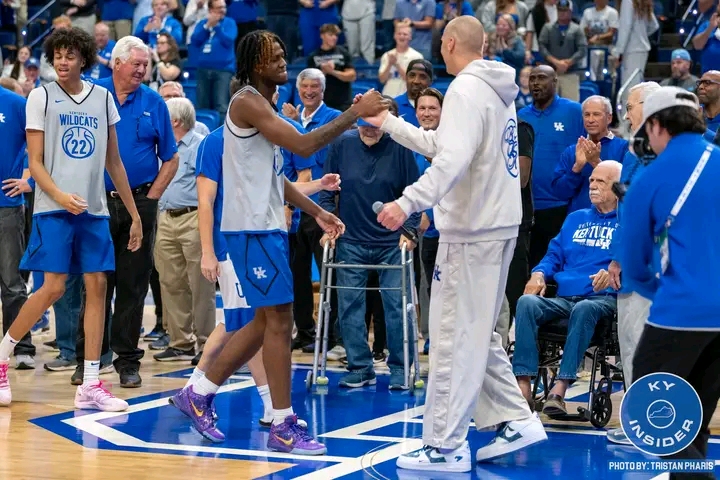When Kentucky hit the floor for its annual Pro Day, the buzz was instant.
Scouts filled the gym, cameras rolled, and for two hours, the Wildcats looked every bit like a team built to make noise in March.
From top to bottom, Mark Pope’s roster looked long, athletic, disciplined, and hungry.
But even as the scouts raved about the group’s energy and potential, one question — one small but important concern — kept surfacing in their notes and post-practice conversations.
Scouts Were Blown Away by Kentucky’s Talent Level
Let’s get one thing straight: nobody left disappointed.
Even with Otega Oweh and Jayden Quaintance sitting out as precautions, Kentucky’s depth was on full display.
Malachi Moreno anchored the paint with shot-blocking and rim-running that screamed “future pro.”
Trent Noah couldn’t miss from deep, drawing quick comparisons to former Kentucky sharpshooters like Tyler Herro.
Mo Dioubate brought a relentless motor — diving for loose balls, flying down the court, and finishing through contact.
And Jaland Lowe? Calm, collected, and in total command — he looked like a point guard who understands exactly what his team needs.
> “They’re loaded,” one scout said. “The size, the athleticism, the depth — this looks like a Sweet 16 team minimum.”
But as the drills turned into scrimmages, one topic began to bubble to the surface — the same one that’s quietly followed this Kentucky team since summer workouts.
The Concern: Half-Court Offense Under Pressure
It wasn’t about effort. It wasn’t about attitude.
It was about execution.
> “When they’re running, they’re dangerous,” one NBA scout said.
“But when you slow them down — when you make them play in the half-court — that’s where things get a little clunky.”
Scouts praised Kentucky’s unselfishness and ball movement, but noted moments where spacing and late-clock decision-making could use refinement.
It wasn’t a red flag — more like a reminder that elite tournament teams thrive in controlled chaos.
Pope’s system encourages freedom and flow — and it’s already producing highlight plays — but some scouts wondered who Kentucky’s “go-to creator” would be when defenses lock in.
> “They’re right there,” another evaluator said.
“They just need to figure out who takes charge when the offense stalls. That’s what separates Final Four teams from good ones.”
Mark Pope’s System Is Getting Respect
Here’s the flip side: scouts love what Pope is building.
The ball movement, spacing, and read-based structure were described as “NBA-style.”
Every player seemed empowered to make smart, quick decisions — a major shift from the more rigid systems of recent Kentucky teams.
> “They’re clearly well-coached,” one scout added.
“You can tell Pope is teaching them how to think the game. Once they find that offensive rhythm, they’ll be scary.”
That comment echoed throughout the gym — respect for Pope’s approach, paired with excitement about where this team can go once the chemistry fully clicks.
Kentucky’s Strengths Are Unmistakable
Despite the minor critiques, the praise poured in.
Scouts highlighted Kentucky’s physicality, defensive effort, and balance across positions.
Malachi Moreno continues to be a name to watch — scouts love his poise and timing.
Trent Noah’s confidence has skyrocketed since the offseason.
And Mo Dioubate drew loud cheers from scouts for his intensity and leadership in huddles.
> “They’re not just talented — they compete,” one NBA personnel director said.
“They look connected. You can feel it.”
That chemistry may be Kentucky’s biggest weapon — something that can’t be measured in drills but shows up when the game is on the line.

